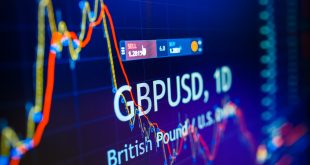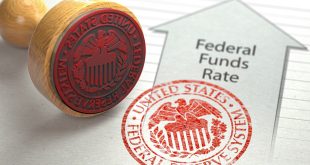US treasury yield fell, on Wednesday, after climbing to the highest since January 2008. The yield on the US 10-year note was last seen down 24.2 basis points to 3.705%, after earlier touching 4.01%, the first rise above 4% in nearly 15 years while money markets girded for higher interest rates that could possibly remain for longer than anticipated.
The retreating yields followed the Bank of England’s intervention into the UK’s gilt market when it said it would buy long-dated British bonds in a move aimed at restoring financial stability in the wake of the new UK Government’s mini-budget, which had triggered a sharp sell-off in UK gilts.
NZD/USD rallied on Wednesday following a strong sell-off in the US dollar as the month-end approaches. NZD/USD rallied by some 1.8% from a low of 0.5564 to a high of 0.5733 the high.
This came on the back of the US dollar index melting through a cascade of market orders across the major currency complex from 114.778 to as low as 112.561 in a matter of half a day of trade between the late London session and New York opening hours. The Dollar Index reading, at the time of writing is standing at 112.711 versus Tuesday’s closing reading at 114.188.
In turn, the US dollar has been beaten from a fresh 20-year high scored ahead of the New York open at 114.778 before falling to the current low of 112.561. The move has dug into a lot of long positioning into other currencies vs. the US dollar this week which has led to a cascade of market orders being triggered along the way, propelling gold and the pound higher.
Naturally as often, the move by bears in the US dollar on Wednesday benefited some financial assets, particularly gold that is rallying to $1,662.78 the high for the day so far, after printing a fresh bear cycle low of $1,614.92 in mid-London morning trade.
The US dollar fell sharply from a 20-year high, easing pressure on gold in what has been described a month-end fixing model. There are still plenty of fundamentally sound reasons for gold’s recovery as it is seen as a safe haven at times of geopolitical tensions.
However, in recent trade on Wednesday, US traders piled into the stock market as the yield on US Treasuries came off decade highs that in recent sessions made interest rate-sensitive companies less attractive to investors.
‘While this policy is under the umbrella of financial stability, it effectively amounts to undertaking temporary quantitative easing (ie policy easing), at a time when the Monetary Policy Committee is trying to contain rampant inflation.
It is therefore difficult to see how the BoE can deliver anything less than a 100bp rate hike at their November meeting. With prices trading below pandemic-era levels, a small number of family offices and proprietary trading shops are increasingly feeling the pressure to finally capitulate on their massively bloated and complacent length in gold.
On Wednesday, Fed speakers Charles Evans and Ralph Bostic reiterated that Fed is raising interest rates at a high pace to address very high, stubborn inflation, and “will likely get US short-term borrowing costs to where they need to be by early next year,” Evans said.
Most Fed policymakers are penciling in a top Fed policy rate of 4.5% to 4.75% by end of next year, based on their projections published last week, and by March we will be at that point according to Evans.
Atlanta Fed President Raphael Bostic said on Wednesday that ”the lack of clear progress on inflation means the Federal Reserve needs “moderately restrictive” interest rates that should reach a level between 4.25% and 4.50% by the end of this year.”
Fed has aggressively hiked interest rates by 3 percentage points this year, taking its target range to 3.00%-3.25%. It carried out its third consecutive 75 basis point increase last week and signaled that rates are likely to rise to the 4.25%-4.5% range by the end of the year.
 Noor Trends News, Technical Analysis, Educational Tools and Recommendations
Noor Trends News, Technical Analysis, Educational Tools and Recommendations





